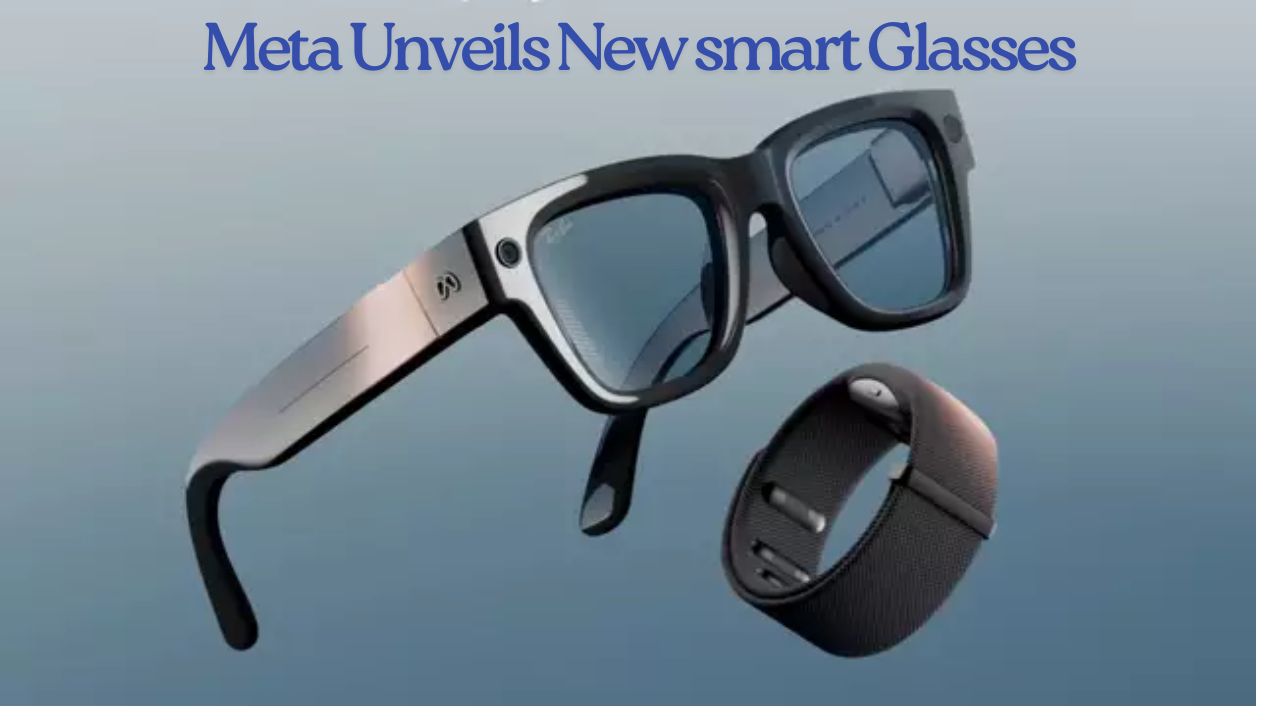Apple, known for redefining consumer technology, is now making a major shift in its product development strategy. According to Bloomberg reports, the Cupertino-based company has paused certain Vision Pro projects to accelerate its long-term vision: smart glasses that could become as essential as the iPhone. This bold move positions Apple to challenge Meta, which has already launched its Ray-Ban smart glasses line in partnership with EssilorLuxottica.
The decision marks a crucial moment in Apple’s extended reality (XR) roadmap. Instead of focusing solely on premium headsets, Apple is now channeling its resources toward lighter, everyday wearable glasses that could reshape the way users interact with technology.
Why Vision Pro Takes a Backseat
Apple’s Vision Pro mixed reality headset, launched earlier this year, was praised for its innovation but criticized for its high cost and niche usability. A cheaper, lighter version of the headset, codenamed N100, was scheduled for release in 2027. However, Apple has reportedly pulled engineers and staff from this project, prioritizing smart glasses instead.
This shift reflects Apple’s realization that the future of computing may not lie in bulky headsets but in lightweight, wearable smart glasses that merge seamlessly into daily life.
Summary Table
| Key Aspect | Details |
|---|---|
| Current Focus | Apple has shifted staff from Vision Pro to smart glasses projects |
| Vision Pro Update | Cheaper N100 model delayed, was originally due 2027 |
| Smart Glasses Versions | N50 (no display, iPhone-paired), Display model with AR features |
| Expected Launch | N50: Prototype in 2025, release in 2027; Display Glasses by 2028 (accelerated) |
| Core Features | Voice interaction, AI integration, health tracking, speakers, cameras, custom chip |
| Competitor | Meta Ray-Ban smart glasses |
| Official Site | Apple Official Website |
Apple’s Smart Glasses Roadmap
1. The First Model: N50
- Internally referred to as N50, this entry-level smart glasses version is expected to ship without a display.
- Instead, it will pair directly with an iPhone to enable core functionalities such as notifications, voice commands, and potentially health tracking.
- Reports suggest Apple could unveil the N50 prototype as early as 2025, with a public release around 2027.
2. Display-Equipped Smart Glasses
- Another version of Apple’s smart glasses will feature a built-in display, positioning it as a direct competitor to Meta’s Ray-Ban smart glasses.
- Originally scheduled for a 2028 launch, Apple is now accelerating development to capture early market demand.
- These glasses are expected to integrate augmented reality (AR) capabilities, offering features beyond voice interaction.
Key Features Expected in Apple’s Smart Glasses
- Voice and AI Integration
- Apple’s new glasses will heavily rely on voice controls and AI-powered interactions.
- With delays in Apple Intelligence and Siri updates, Apple is planning a revamped Siri rollout in March 2026, making the AI ecosystem central to its glasses strategy.
- Multiple Styles and Customization
- Just like the Apple Watch, the smart glasses may come in different styles and finishes to appeal to both fashion-conscious and tech-focused users.
- Health and Wellness Tracking
- Apple is said to be building advanced health-tracking sensors, making the glasses more than just a productivity tool. Potential use cases include eye health monitoring, posture detection, or integration with Apple’s Health ecosystem.
- Multimedia and Entertainment
- Built-in speakers for music playback, cameras for recording photos/videos, and AI-powered media enhancements are rumored.
- These features would allow the glasses to double as a lifestyle accessory.
- Custom Chip Development
- Apple is designing a new chip specifically optimized for smart glasses. This chip is expected to manage low-power consumption while handling AI tasks and seamless iPhone pairing.
Why This Move Matters for Apple
Apple’s decision to pivot toward smart glasses is more than a tactical change it’s a bet on the future of personal technology. Just as the iPhone replaced feature phones and the Apple Watch redefined wearables, smart glasses could eventually become the next must-have device.
By moving faster, Apple ensures it won’t lag behind Meta and other competitors, especially as AI and augmented reality converge into daily consumer products.
Challenges Ahead
While the opportunity is massive, Apple faces significant hurdles:
- Battery Life: Packing displays, sensors, and AI into lightweight frames requires breakthroughs in battery technology.
- Privacy Concerns: Cameras and microphones in glasses often raise privacy debates, which Apple will need to address transparently.
- Market Adoption: Consumers may take time to adjust to wearing tech devices on their faces daily.
- Pricing Strategy: Apple must balance premium pricing with mass adoption, just as it did with iPhones and Apple Watches.
Frequently Asked Questions (FAQ)
Q1: Why is Apple pausing Vision Pro development?
Apple has redirected resources to accelerate smart glasses development, which are seen as having a broader consumer market than bulky headsets.
Q2: When will Apple’s smart glasses launch?
The non-display version (N50) could be released in 2027, while the display-equipped model may arrive by 2028, though Apple is accelerating development.
Q3: How will these glasses compete with Meta?
Apple’s glasses will compete directly with Meta’s Ray-Ban smart glasses by offering stylish designs, voice-AI integration, and AR display options.
Q4: Will Siri power Apple’s smart glasses?
Yes. A revamped Siri update in 2026 will provide advanced voice and AI features tailored for wearable devices like smart glasses.
Q5: What health features might be included?
Apple is reportedly working on health-tracking sensors, which could monitor eye health, posture, or integrate into the Apple Health ecosystem.
For More Information Click HERE

